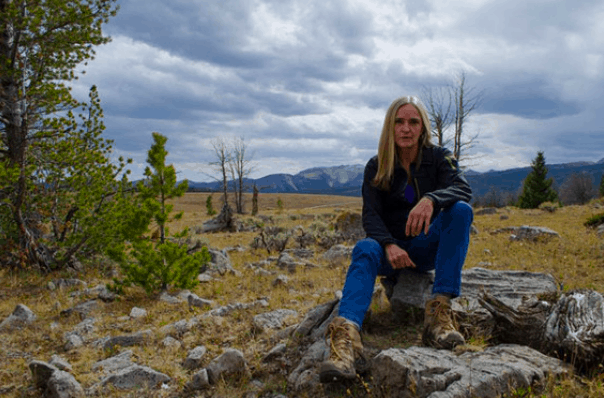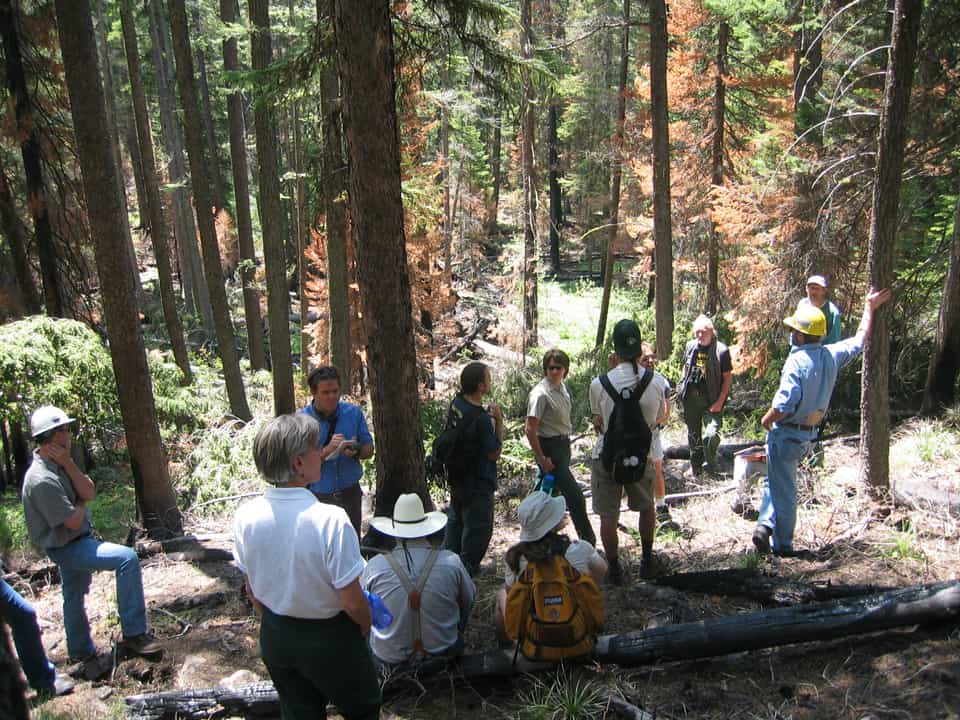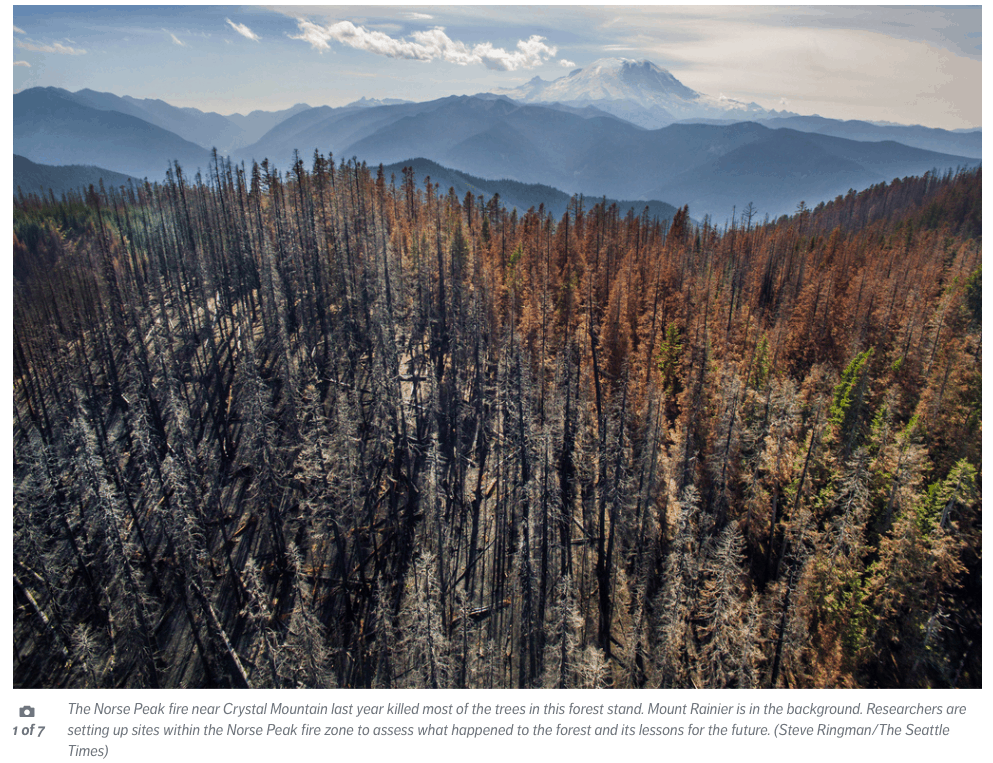Back in April 2013, I wrote a post for this blog titled “Rough and Ready: The Other Story.” Here’s the opening for paragraphs of that April 2013 article:
Earlier in the week the owners of the Rough and Ready Lumber mill south of Cave Junction, Oregon announced they were closing their doors for good. There was one reason cited by the owners: A lack of logging on Forest Service and BLM lands in southwestern Oregon. Jennifer Phillippi even went so far as to describe the situation this way, “It’s like sitting in a grocery store not being able to eat while the produce rots around you.”
Well, if you wander away from the timber mill’s talking points even a little bit and talk with actual neighbors in southwestern Oregon who have witnessed Rough and Ready’s handywork over the years, you get a much different story – a story of over-cutting, mis-management, toxic contamination and political manipulation.
Also in April 2013, the NBC station in Medford, Oregon had more information on the announced closure of the Rough and Ready Lumber mill near Cave Junction, Oregon:
Today, as the last saw mill in Josephine and Jackson county announces it’s plans to close, some residents are sharing the other side of the story: one they say includes political manipulation, mis-management, and contamination. For some, the news that Rough and Ready Lumber in Cave Junction is going out of business threw up a red flag. Residents fear the threat to close is a ploy to gain access to more timber.
Residents say they’ve seen this happen before. “It’s been some years back the Rough and Ready mill was up for sale,” says South Cave Junction Neighborhood Watch member, Guenter Ambron.
“It’s just wrong,” says a neighbor of Rough and Ready, too scared to identify herself on camera for fear of retaliation. She tells us there’s more than meets in the eye in the company’s announcement to close. “I think it’s being used as a tool to push our representatives and governor into giving them O&C lands,” continues the neighbor.
She says at one point, Rough and Ready was considered a self sufficient company with private logging lands, but she says it’s their own fault they’re out of wood. “If they actually maintained their resource lands and had not clear cut and sprayed with poisons they would actually have a constant supply of timbers to harvest.”
Rough and Ready was in the news again recently. On September 5, 2018 the Oregonian published an article titled, “Oregon sawmill deal cost taxpayers millions. Was it a crime?”
Last month, the state forcefully reasserted that a corporate arm of Portland-based Ecotrust unlawfully inflated project costs and omitted material facts to get millions in tax credits it didn’t qualify for.
A question now, some legal experts say: Will the state investigate that as a potential crime?
Officials at state economic development agency Business Oregon used unusually strong language in a memo to Ecotrust managers, characterizing the tax credit deal as built on untrue and incomplete information. The deal, approved in 2014, was intended to throw a lifeline to the Rough & Ready sawmill in Southern Oregon….
The complicated transaction at issue began in 2013, when Rough & Ready was looking for a bailout and Ecotrust stepped in with the know-how to connect the sawmill to investors via tax credits. The mill owners and Ecotrust executives sought to rebuild the Josephine County economy by restarting the mothballed mill.
To get the $3.1 million in state credits it sought for the Rough & Ready deal, Ecotrust needed to show Business Oregon the mill would spend at least $8 million on qualifying expenses. Its 2013 application promised it would do just that.
However, in its August 16 memo recently released to The Oregonian/OregonLive, Business Oregon said Ecotrust managers made “material misrepresentations and omissions” and failed to “accurately describe” their plans.
The state found Ecotrust failed to disclose that it orchestrated a one-day loan of nearly $5 million from Chase Bank to Rough & Ready. That loan, Business Oregon concluded, did not “represent an arms-length transaction” and was used in essence to let the couple who own the sawmill buy it from themselves.
The transaction was included in the overall budget for the project, which meant it qualified on paper for more credits than it would have otherwise. But Business Oregon determined the transaction should not have been counted and, if it had been disclosed, the deal likely wouldn’t have been approved.
The undisclosed loan “unlawfully” boosted the project budget, and Ecotrust and Chase “improperly benefited” as a result, according to the Business Oregon memo, written by director Chris Harder.
Rough & Ready’s owners and Chase Bank knew the one-day loan was “circular” and was not used to make a valid purchase, Harder wrote. Ecotrust structured the deal so that the loan passed from Chase to Rough & Ready via a second corporate subsidiary of Ecotrust established just for the sawmill deal.
Chase, which provided the loan and then was able to buy the resulting tax credits at a deep discount, declined to comment on the appropriateness of the single-day loan. A Chase spokeswoman said the bank makes investments “supported by economic development authorities that intend to meet local needs.”
The Rough & Ready sawmill went belly up barely a year after the deal closed, erasing all 70 promised jobs. Taxpayers lost at least $7 million in state and federal underwriting on the deal gone wrong….
Some legal experts say the state should not only seek to claw back the money, but should also seriously consider a criminal investigation….
Hafez Daraee, a corporate defense attorney who is not involved in the case, said someone who knowingly makes a misrepresentation in the course of receiving public financing could face civil financial penalties.
“The rule of thumb is if you try to fudge your numbers, the government has every right to come after you, as they should,” Daraee said….
The quagmire Business Oregon now finds itself in was avoidable. There were clear signs the Rough & Ready project was doomed from the start, The Oregonian/OregonLive first reported in March.
Glaring signals included an overly rosy financial analysis and a hand-written budget proposal in which all expenditures came out to an even $100,000. But the state and federal tax credit programs that financed the project allow for little scrutiny of potential deals and rely heavily on the accuracy of submitted applications.
The memo relates that Ecotrust had to show the project had $8 million in qualifying expenses to land $3.1 million in tax credits. To reach that threshold, the memo asserts, Ecotrust inflated the project’s expenses using a “one-day” loan. Mill owners Jennifer and Link Phillippi used a $4.8 million from Chase Bank to essentially buy the mill from themselves and then paid off the loan the next day. Yes, you read that right.
Yesterday, the editorial board of the Oregonian published this editorial, titled, “Oregon sawmill deal cost taxpayers millions. Was it a crime?”
[Oregon Attorney General Ellen] Rosenblum should investigate Ecotrust’s use of the New Markets Tax Credit program to determine whether its practices rise beyond sloppiness to criminal malfeasance.
Rosenblum knows more now, considering that Business Oregon officials have spent the past six months scrutinizing Ecotrust CDE’s deal. In mid-August, officials reported their findings to the Oregon Department of Revenue. Among numerous accusations, the memo claimed that Ecotrust “omitted material information,” “failed to accurately describe the sources and uses of proceeds” and “failed to disclose the intentions” of the one-day loan.
The memo relates that Ecotrust had to show the project had $8 million in qualifying expenses to land $3.1 million in tax credits. To reach that threshold, the memo asserts, Ecotrust inflated the project’s expenses using a “one-day” loan. Mill owners Jennifer and Link Phillippi used a $4.8 million from Chase Bank to essentially buy the mill from themselves and then paid off the loan the next day. Yes, you read that right….
Business Oregon shouldn’t continue to extend the deadline that would provide Ecotrust a second chance. Instead, the state should seek to recoup the tax credits that this deal never should have received. And, Rosenblum should aggressively investigate what went wrong and who was responsible.
Across the state, Oregonians could use the help that sound economic investment can provide. But the investment needs to be real and long-lasting, with money going reliably home in their paychecks — not out the mill door through management fees.
Amen.


